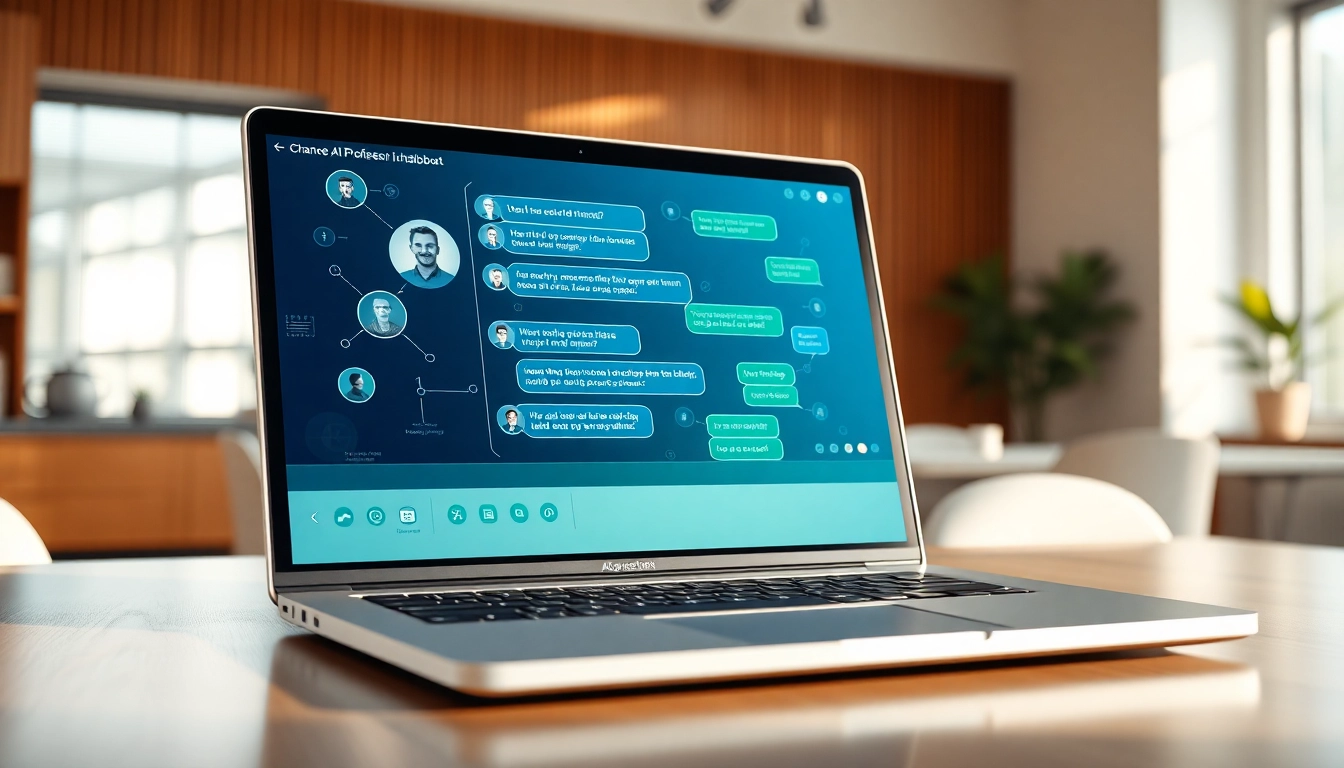Understanding the Basics of Website Chatbots
What is a Website Chatbot?
A website chatbot is an artificial intelligence (AI) tool designed to simulate a conversation with users through textual or auditory methods. These bots operate through pre-set scripts or machine learning algorithms to provide instant responses to user inquiries. Essentially, they act as virtual assistants on websites, equipped to handle everything from answering frequently asked questions to providing real-time support. By integrating a website chatbot on your platform, businesses can improve user engagement and enhance customer experiences.
How Website Chatbots Work
The functionality of website chatbots revolves around natural language processing (NLP), which helps the bot understand user inputs and respond appropriately. There are two primary types of chatbots: rule-based and AI-based.
Rule-based chatbots follow a scripted dialogue, providing responses based on predefined keywords. They work well for simple interactions but can struggle in more complex conversations. In contrast, AI-based chatbots utilize machine learning to understand context and deliver more nuanced responses, allowing for a more natural flow of conversation. These bots learn from past interactions, continuously improving their responses and making them more effective over time.
Benefits of Using a Website Chatbot
There are numerous advantages to employing a website chatbot. First and foremost, they provide 24/7 customer support, ensuring that users can find answers at any time. This availability can significantly enhance customer satisfaction, leading to increased loyalty.
Additionally, website chatbots can handle multiple inquiries simultaneously, eliminating wait times for users. This efficiency not only improves user experience but also allows human agents to focus on more complex tasks. Moreover, chatbots can collect valuable data on user behaviors and preferences, which businesses can leverage for further marketing insights and personalized experiences.
Choosing the Right Platform for Your Website Chatbot
Evaluating Different Chatbot Solutions
Selecting the appropriate chatbot solution requires careful consideration of several factors including functionality, ease of use, and scalability. Various platforms offer distinct features such as pre-built templates, drag-and-drop interfaces, integration capabilities, and analytics tools. Evaluate each option against the specific needs of your business, including the types of inquiries your chatbot is expected to handle and the complexity of the conversations.
Some popular chatbot platforms include Chatfuel, ManyChat, and Tidio. Each has its strengths and weaknesses, so a thorough comparison based on your unique requirements is crucial in finding the right fit.
Customizing Your Chatbot Experience
Personalization is key when it comes to creating an effective chatbot experience. This means tailoring the bot’s responses, tone, and interactions in a way that resonates with your target audience. Start by defining the chatbot’s personality—will it be professional, friendly, or sarcastic?
Additionally, customization should extend beyond dialogue. Consider visual elements such as logos, color schemes, and button styles to ensure that your chatbot aligns with your brand identity. This consistency fosters trust and enhances user recognition.
Integrating Chatbots with Existing Systems
A successful chatbot implementation often hinges on the seamless integration with existing systems. To maximize efficiency, your chatbot should be compatible with customer relationship management (CRM) software, eCommerce platforms, and live chat systems.
Integrating these systems allows chatbots to access customer data in real time, providing personalized responses and escalating inquiries to human agents when necessary. For example, if a user indicates they need help with an order, the chatbot should retrieve relevant order details from the database to enhance the interaction.
Design Best Practices for Website Chatbots
Creating Conversational Flows
Mapping out conversational flows is essential for guiding user interactions smoothly. Start by anticipating the most common questions your users may have and creating pathways for each potential discussion. Design clear directives that help users navigate the conversation, incorporating quick replies or multiple-choice answers to keep interactions fluid.
User testing is an important step in this process. By collecting feedback from real users, you can identify pain points and adjust conversational flows for greater efficiency.
Maintaining Consistent Branding
Your chatbot should be an extension of your brand. This consistency in branding includes visual aspects as well as the voice and tone of the chatbot. Ensure that your chatbot’s language reflects your brand’s personality and values, reinforcing the overarching message you wish to convey to your audience.
Consistent branding helps to build rapport with users and enhances the overall perception of your business. Users should be able to identify your bot as a representative of your brand, recalling past interactions as positive experiences.
Enhancing User Experience with Personalization
Personalization is not just a benefit; it’s an expectation. In a world where users seek tailored experiences, leveraging the data collected allows chatbots to provide recommendations based on user behaviors or previous interactions.
Personal touches can range from addressing users by their names to suggesting products based on past purchases. This kind of proactive engagement fosters a sense of connection and relevance, greatly enhancing user satisfaction.
Common Challenges in Chatbot Implementation
Addressing User Frustrations
While implementing a chatbot brings many advantages, users may also face frustrations, particularly if the bot fails to understand their inquiries. Addressing these gaps is essential.
Implementing an escalation process is one effective solution. Users should be seamlessly routed to a human agent when the chatbot cannot provide satisfactory answers. Regularly updating the bot’s knowledge base and continuously training it with new data also helps improve its effectiveness and reduces user frustration.
Ensuring Data Security and Privacy
With the rise of digital interaction comes the need for heightened data security measures. It is crucial to prioritize user privacy and compliance with regulations such as GDPR and CCPA.
Ensure that your chatbot platform incorporates strong encryption, secure data storage, and protocols for handling sensitive information. Clearly communicate your privacy policy to users, assuring them that their data is handled responsibly and securely.
Monitoring Chatbot Performance Metrics
Evaluating the performance of your chatbot is vital for ongoing improvement. Key performance metrics include response time, user satisfaction scores, and successful resolution rates. Utilize analytics tools to track these metrics and gain insights into user interactions.
Regularly reviewing chatbot performance enables you to identify opportunities for optimization. Implementing A/B testing can also provide valuable feedback on different conversation flows and help determine what resonates best with users.
Future Trends in Website Chatbots
The Role of AI in Chatbot Evolution
As AI technology continues to advance, we can expect chatbots to evolve significantly. Innovations in machine learning will enhance their capability to interpret complex user inputs and deliver personalized interactions. AI would enable chatbots to analyze context, emotional tone, and intent, allowing for even more human-like conversations.
As they become more sophisticated, businesses will need to invest in training their chatbots with more diverse datasets, ensuring they remain relevant and effective in addressing user needs.
Integrating Multichannel Support
The future of website chatbots will likely include enhanced multichannel support, allowing businesses to engage with users across a wide range of platforms and devices. Whether it’s through social media, email, or messaging apps, maintaining consistent communication with your audience will be crucial.
A multichannel approach not only increases reach but also enhances customer experience by providing users with the flexibility to choose their preferred platform for interaction.
Preparing for the Next Generation of Chatbot Technologies
As chatbot technologies continue to advance, organizations must remain agile and adapt to new tools and methodologies. Preparing for trends such as voice-enabled chatbots, advanced analytics, and hyper-personalization will require ongoing training and investment.
By staying informed about emerging technologies and continuously iterating on your chatbot, your business can effectively meet changing user expectations and maintain a competitive edge in the digital landscape.













Leave a Reply